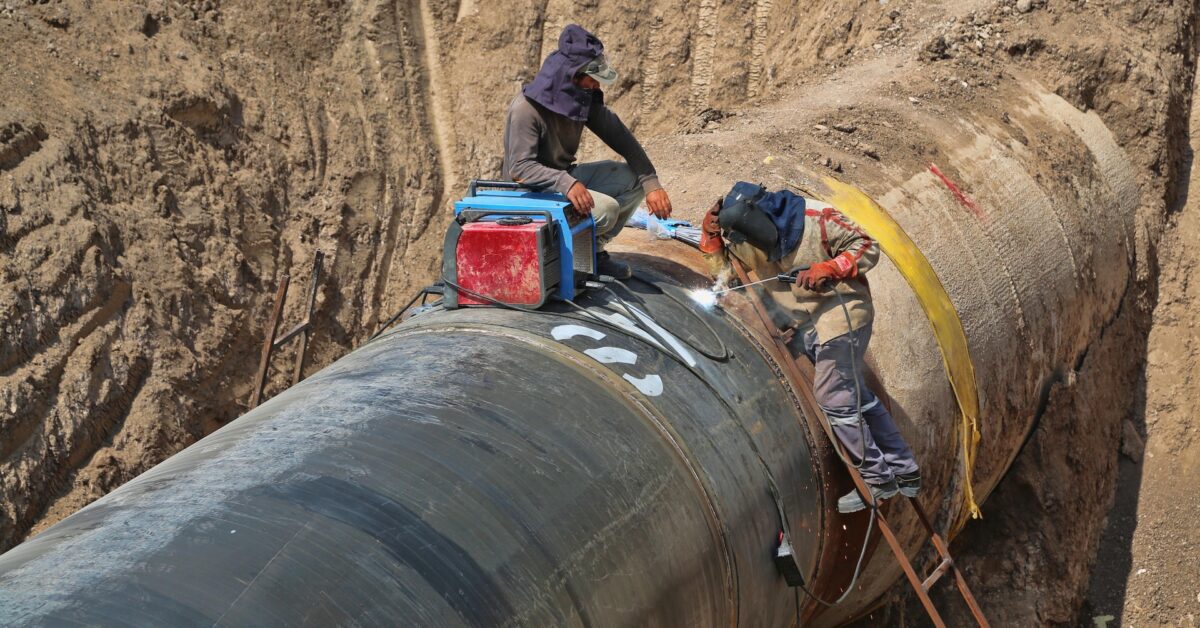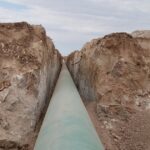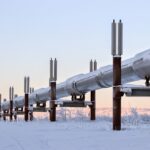Gas pipelines are one of the most important infrastructures for transporting natural gas from production facilities to distribution centers and end-users. These pipelines are the backbone of the energy sector and play a crucial role in meeting the world’s growing energy demands.
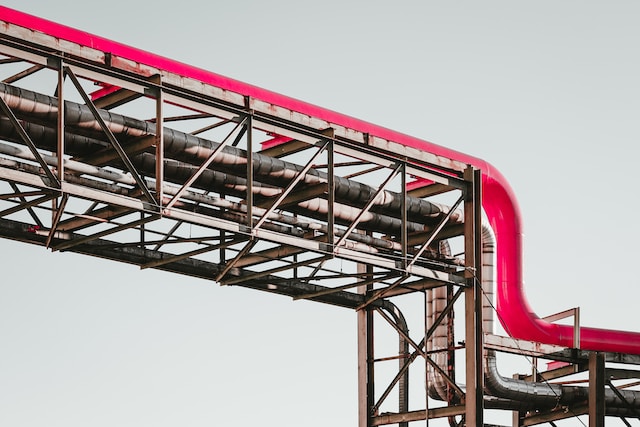
via Unsplash
Gas pipelines transport various types of gases, including natural gas, hydrogen, and other gases. However, these pipelines are prone to damage and leaks, which can have catastrophic consequences, including loss of life, property damage, and environmental contamination.
Gas pipeline inspections are crucial to ensure the safety and integrity of the pipeline system.
What is a Gas Pipeline Inspection?
A gas pipeline inspection is the process of evaluating the condition and safety of the pipeline system. The inspection is performed to identify any damages, leaks, or defects that can compromise the safety and integrity of the pipeline. The inspection is carried out by trained professionals who use various methods to assess the pipeline’s condition.
The inspection process involves a detailed evaluation of the pipeline system, including its physical condition, structural integrity, and safety features. The inspection team may use various methods and materials to assess the pipeline’s condition, such as visual inspection, hydrostatic testing, ultrasonic testing, magnetic flux leakage testing, and pipeline pigs.
The inspection team will typically follow a checklist that includes the pipeline’s condition, corrosion, leaks, dents, cracks, and a protective coating. This checklist helps ensure that the team covers all its bases. The inspection team may also use right-of-way aerial pipeline imagery and an as-built survey to determine the physical pipe’s location or depth of cover.
Gas pipeline inspections ensure the pipeline system’s safety and integrity. Regular inspections can help prevent catastrophic incidents and minimize the risks associated with gas pipeline operations.
Gas pipeline operators should have a robust inspection program that includes regular inspections and maintenance to ensure the safety and integrity of the pipeline system. Those conducting the inspections should be highly trained and vetted.
What Are the Different Methods of Gas Pipeline Inspection?
Various methods of gas pipeline inspection are used to evaluate the condition and safety of a pipeline system. The choice of method depends on the type of gas being transported, the pipeline’s age, and the pipeline’s location.
The different methods of gas pipeline inspection include visual inspection, hydrostatic testing, ultrasonic testing, magnetic flux leakage testing, and pipeline pigs.
Visual inspection, as the name might suggest, is a basic method that involves visually inspecting the pipeline for any visible damages or leaks. This method detects external damages such as corrosion, dents, and cracks. It’s typically not the right method for discovering internal or microscopic faults as it relies on the naked eye of the inspector.
Hydrostatic testing tests the pipeline’s integrity by filling it with water and applying pressure to check for leaks or damages. This method is useful in detecting leaks and weaknesses in the pipeline. With hydrostatic testing, the inspector may discover leaks or micro-faults that they could not see just by looking.
Ultrasonic testing is a non-destructive testing method that uses high-frequency sound waves to detect defects, such as cracks or wall thickness variations in the pipeline. The inspection team uses special equipment to send ultrasonic waves through the pipeline, which bounce back when they encounter any defects or damage.
Magnetic flux leakage testing uses magnetic fields to detect any changes in the magnetic field caused by defects or damage to the pipeline. This method is useful in detecting both internal and external defects. Highly trained operators are required to perform this type of testing.
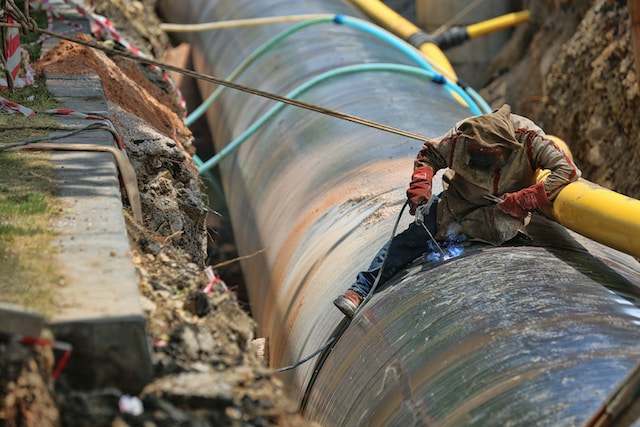
via Unsplash
Pipeline pigs are devices inserted into the pipeline and used to clean the pipeline as well as to detect any damages or defects.
Pipeline pigs can detect internal and external damages or defects, and they are especially useful for detecting corrosion, a common problem in gas pipelines – especially those that have been around for a while or are made up of naked steel without the protective coatings that have become more popular in recent decades.
The different methods of gas pipeline inspection are designed to detect any damages or defects in the pipeline system. Combining these methods can comprehensively evaluate the pipeline system, ensuring that any potential issues are identified and addressed.
Gas Pipeline Inspection Checklist
A gas pipeline inspection checklist is a comprehensive list of items that should be checked during every inspection to ensure the safety and integrity of the pipeline system. The checklist should include items such as the pipeline’s condition, corrosion, leaks, dents, cracks, and the pipeline’s protective coating.
When conducting the inspection and following through on the checklist, The inspection team may also use right-of-way aerial pipeline imagery or an as-built survey to determine the physical pipe’s location and its depth of cover. Those tactics can aid the team in determining the scope of the inspection process.
The following is an example of a gas pipeline inspection checklist:
- Check the condition of the pipeline’s exterior, including any visible damages or leaks.
- Evaluate the pipeline’s protective coating for any signs of damage or wear.
- Check the condition of the pipeline’s valves, fittings, and other components.
- Use ultrasonic testing or magnetic flux leakage testing to detect any internal defects in the pipeline.
- Conduct a hydrostatic test to check the pipeline’s integrity and detect any leaks or weaknesses.
- Check the pipeline’s as-built survey to determine the location and depth of the physical pipe.
- Conduct a pipeline pig inspection to clean the pipeline and detect any damages or defects.
- Use right-of-way aerial pipeline imagery to identify any visible damages or leaks.
Using a comprehensive checklist, gas pipeline inspectors can ensure that all potential issues are identified and addressed during the inspection. The checklist can also help ensure the inspection is thorough and accurate, minimizing the risk of accidents and damage to the environment or local communities.
Additionally, adhering to a gas pipeline inspection checklist ensures consistency throughout different inspections, inspectors, and inspection periods. Ensuring this level of rigorous commitment to continuity allows a level of trust throughout pipeline inspections that otherwise may not be present.
How Often Should Gas Pipelines Be Inspected?
Gas pipelines are essential for safely and efficiently transporting natural gas, hydrogen, and other gases from production facilities to distribution centers and end-users. However, they must be inspected regularly to ensure their safety and integrity. If they are not inspected, dangerous leaks or other environmentally destructive accidents may occur.
The frequency of gas pipeline inspections depends on various factors, including the age of the pipeline, the type of gas being transported, and the pipeline’s location. The pipeline should be inspected at least once a year and, in some cases, more frequently – that may be necessary if the pipeline is located in a high-risk area or is transporting hazardous gases.
Gas pipeline inspections should be conducted by a robust inspection program that includes regular inspections and maintenance. The program should be designed to detect any damages or defects that can compromise the safety and integrity of the pipeline system.
The inspection program should also include using advanced technologies, such as pipeline pigs and ultrasonic testing, to detect any internal defects in the pipeline.
Gas pipeline operators should prioritize the safety of their pipelines by investing in regular inspections and maintenance. By ensuring the safety and integrity of the pipeline system, operators can reduce the risk of accidents and minimize the potential impact on the environment as well as local communities.
How Long Does a Gas Pipeline Inspection Take?
The duration of a gas pipeline inspection depends on several factors, including the size and complexity of the pipeline system, the methods used for inspection, and the presence of any visible damages or leaks.
A simple visual inspection may take a few hours, while a more comprehensive inspection that involves ultrasonic testing or pipeline pigs can take several days. The inspection team should estimate how long the inspection will take before starting the process.
The inspection team may use advanced technologies such as drones or aerial imagery to get a bird’s eye view of the pipeline system and identify any visible damages or leaks. This can help speed up the inspection process and reduce the overall duration of the inspection.
Using pipeline pigs and ultrasonic testing can also reduce the duration of the inspection process as they can detect internal defects in the pipeline quickly and accurately. These advanced technologies allow pipeline inspections to occur both more quickly and more safely, as they allow for a higher level of precision and consistency.
It is crucial to note that gas pipeline inspections should not be rushed to ensure that all potential issues are identified and addressed. Inspectors should take the necessary time to thoroughly evaluate the pipeline system to ensure that the inspection is comprehensive and accurate. Rushing through an inspection can lead to costly errors.
A gas pipeline inspection duration depends on several factors, such as the pipeline system’s size and complexity and the inspection methods. The inspection team should estimate how long the inspection will take, and the use of advanced technologies such as drones, aerial imagery, pipeline pigs, and ultrasonic testing can reduce the overall duration of the inspection.
However, taking time with the inspection process is important to identify and address all potential issues, and this process should never be rushed.
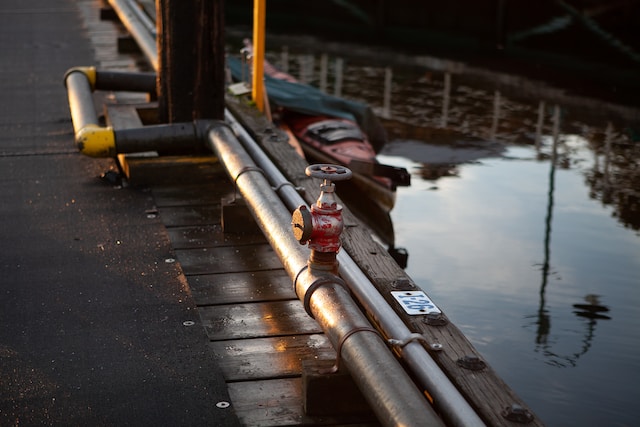
via Unsplash
Final Thoughts
Gas pipeline inspections are a critical process essential to ensuring the safety and integrity of the pipeline system. Regular inspections are necessary to prevent catastrophic incidents and minimize the risks associated with gas pipeline operations.
Gas pipeline inspections should be conducted by trained professionals who use various methods to assess the pipeline’s condition, such as visual inspection, hydrostatic testing, ultrasonic testing, magnetic flux leakage testing, and pipeline pigs.
Gas pipeline inspection checklists ensure that all potential issues are identified and addressed during the inspection process. The checklist includes items such as the pipeline’s condition, corrosion, leaks, dents, cracks, and the pipeline’s protective coating.
Right-of-way aerial pipeline imagery and as-built survey may also be used to determine the physical pipe’s location or depth of cover.
Gas pipeline operators should have a robust inspection program that includes regular inspections and maintenance to ensure the safety and integrity of the pipeline system. The inspection process should be comprehensive, accurate, and thorough, and advanced technologies should be utilized to ensure that all potential issues are identified and addressed.
Gas pipeline inspections ensure the safe and efficient transportation of natural gas, hydrogen, and other gases. Gas pipeline operators must prioritize the safety of their pipelines by investing in regular inspections and maintenance.
The inspection process should be conducted regularly, following a comprehensive checklist and using advanced technologies to ensure the safety and integrity of the pipeline system.
Take a look at Fenstermaker’s energy service page for more information.
